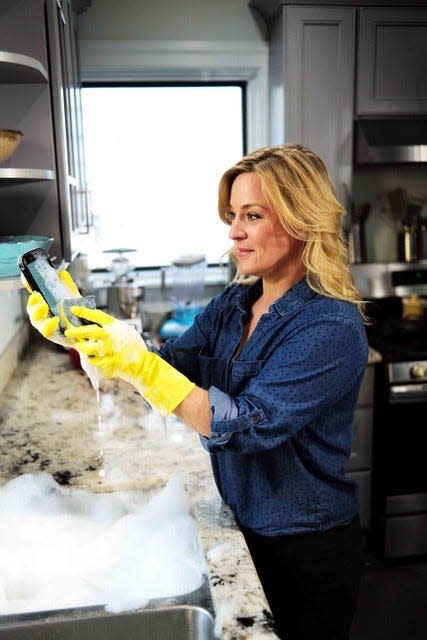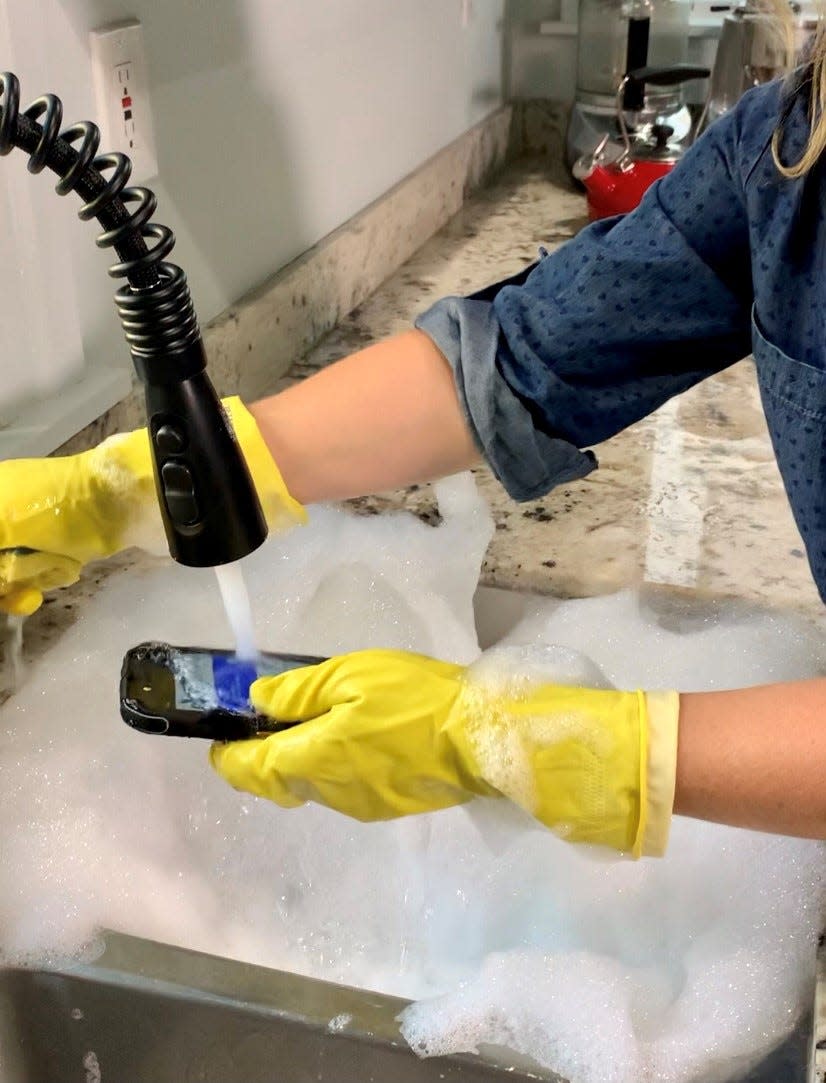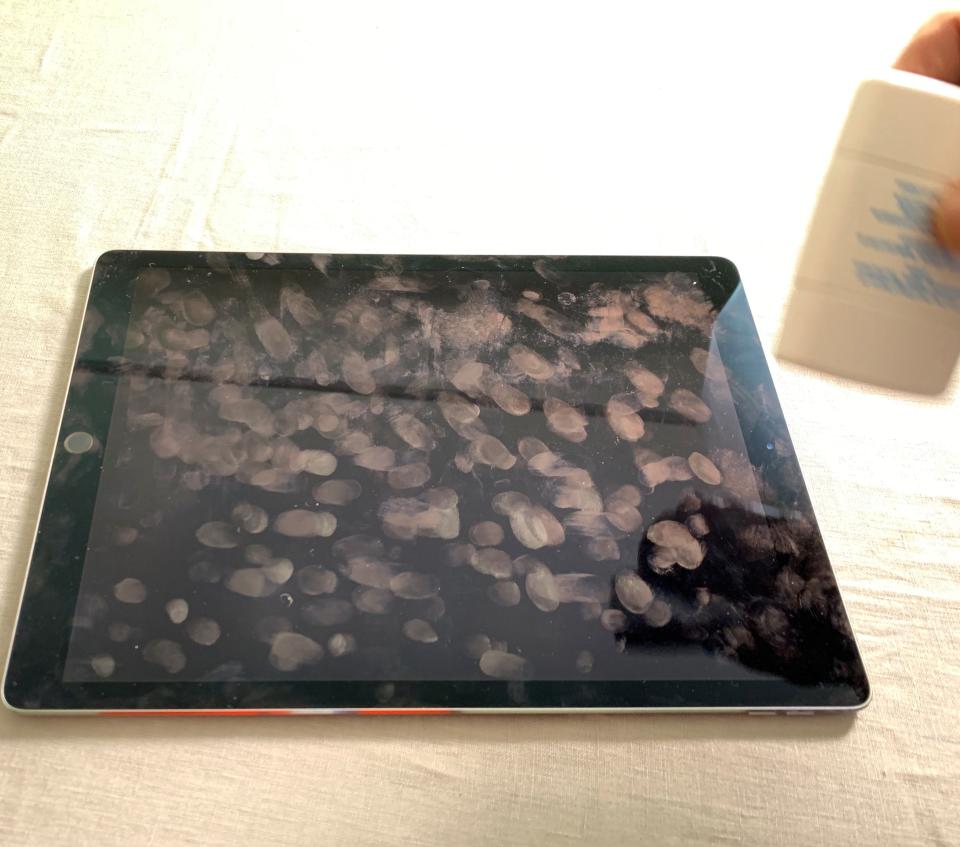How to wash your phone, disinfecting it during coronavirus pandemic
Every time I get home, I plunk down my bag and beeline straight for the sink where I wash my hands with antibacterial soap and water as hot as I can stand it for at least two rounds of “Happy Birthday to Me.” Then I go on a hunt for the smartphone I left somewhere in the bottom of my black-hole of a purse, check it for anything urgent from the last few minutes of life without it in my hand, and then — and only then — go about my day.
Sound familiar? Now think like an epidemiologist. Where’s the flaw in that system?
Americans check their phones nearly 100 times a day — at least once every 10 minutes — and touch it an average of 2,617 times during waking hours, according to one study. That’s a whole lot of chances for some gross germy thing to hop, skip, or jump from your smartphone to your skin (or worse, straight into your mouth).
Hand washing is one of the best ways to prevent the spread of disease, according to the CDC. Since our smartphones are like a third hand, failing to wash them regularly is an enormous flaw in an otherwise solid infection-prevention scheme.

Wash, rinse and repeat?
But how do you properly sanitize a phone without damaging it? You can’t really run it under hot soapy water ten times a day — unless it’s this new Cat S42 ($300) phone that you can actually run under hot soapy water as often as you want.
These rugged phones — out of the same company that makes bulldozers — are designed for extremes. It can be submerged and scrubbed with water or disinfectant, according to the company.
What the Cat phones have in drop-spill-and-shock features, though, they lack in photo, video, gaming, streaming and all the other drool-worthy tech-specs we love most about our high-end smartphones. And anyone who’s ever dropped their handset into a tub or toilet, or forgot it was in their pocket and jumped into the water (yes, I’ve done all three, more than once), knows you can’t just scrub it down.

The simplest way to sanitize your smartphone
In the past, I recommended a 50-50 DIY concoction of isopropyl alcohol and water, sprayed on one of those soft microfiber cloths that come with a lot of your gadgets. We now know the mixture has to be at least 70% alcohol for it to disinfect touch screens. Other than that, this is still one of the best ways to sanitize your smartphone, case, earbuds, gaming controls and everything else you touch all the time.
You can also use something like Clorox Disinfecting Wipes now too, according to Apple’s updated instructions.
All gadget makers and sellers warn not to use bleach, paper towels, or anything abrasive on your smartphone and say you should also unplug all external power sources, devices and cables. In addition, don’t spray anything directly onto your device, and be extra careful not to get any moisture into any openings.

UV light cleaners
If you don’t mind adding one more gadget to your day-to-day cleaning routine, UV light cleaners like PhoneSoap 3 ($79.95), promise to clean-up — and charge up — your phone at the same time. The company claims their device kills 99.99% of germs and bacteria — and they’re not the only ones. Mophie ($79.95) Castify ($120), Doctor’s Choice ($100), EVLA ($160), and many others promise to add a layer of protection between you and all that icky stuff living on your phone.
But does it work? We think so.
On its website, the FDA says UVC radiation “has effectively been used for decades to reduce the spread of bacteria, such as tuberculosis.” The site says UCV light could be an excellent way to kill COVID-19, but there’s no way to know for sure yet because “there is limited published data about the wavelength, dose and duration of UVC radiation required to inactivate the SARS-CoV-2 virus.”
As long as you don’t expose your eyes or skin to the UV light, and use it correctly, it can’t hurt as an added layer of protection. In my family, we use a combination of the PhoneSoap 3 and a little bit of elbow grease to wipe the phone down a few times a day. Just be sure to do your homework before you buy a particular gadget making all kinds of incredible claims, and take a look at USA Today’s deep-dive into the risks and benefits of UV light too.
Jennifer Jolly is an Emmy Award-winning consumer tech contributor and host of USA TODAY's digital video show TECH NOW. Email her at jj@techish.com. Follow her on Twitter @JenniferJolly.
This article originally appeared on USA TODAY: How to wash your phone: Coronavirus pandemic calls for disinfectant

